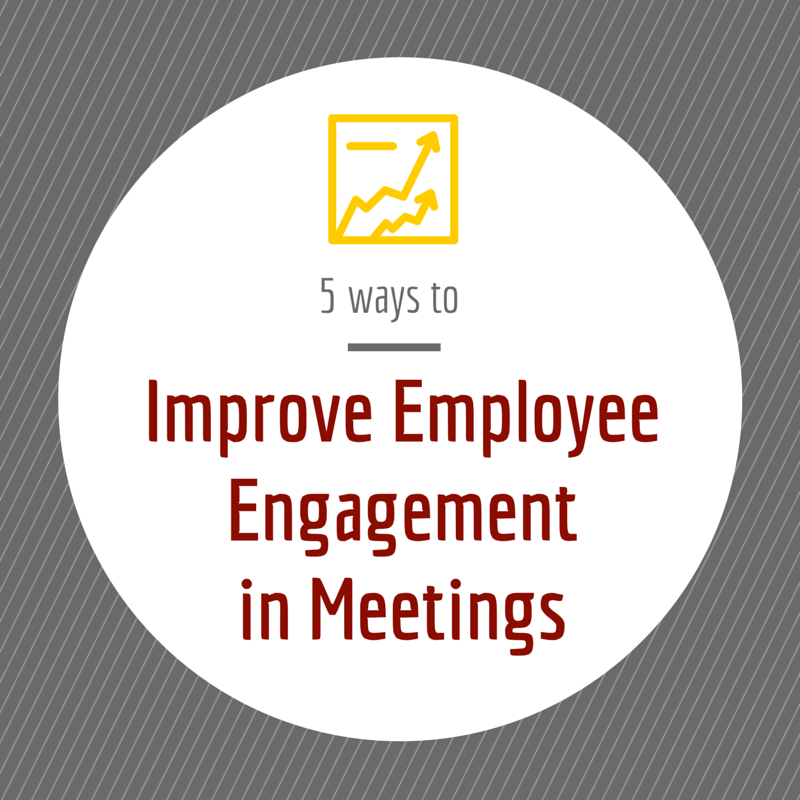7 Meeting Checkpoints That Ensure Alignment

Standing meetings, quick huddles, speedy meetings – everywhere we look, the productivity experts are challenging us to run faster, shorter meetings.
But sometimes when you get running really fast, it’s easy to lose people along the way. When a group rushes through updates and decisions, anyone who comes to the meeting distracted, unfamiliar with the topic, or who maybe just needs a bit more time to process new information is going to miss something.
Leave No One Behind
When we go too fast for the whole group to participate, our desire to be efficient and end on time can sabotage the meeting’s purpose. Every meeting is a kind of journey, taking a group from what they knew and felt before the meeting, to a place with new answers, decisions and shared commitments to keep. If you get to the end of the journey without all your people onboard, you’ve literally wasted everyone’s time, and will have to go back and bring all those people forward again in yet another meeting.
As you work to run faster and more efficient meetings, use these 7 checkpoints to make sure everyone arrives at the same destination together.
Checkpoints to Start the Meeting
Use these checkpoints any time you:
- use a new meeting process,
- introduce a new participant to a regular meeting,
- or when it’s been awhile since the last meeting.
1. Check the Purpose
Make sure everyone knows why this meeting made it onto the calendar, why their attendance is important, and what the meeting result should be.
This checkpoint signals the official start of the meeting.
For a regular meeting, this checkpoint can sound like this:
“Today we’re meeting to ….
You’re here because you ….
At the end of the meeting, we will have ….”
Example:
“Today we’re meeting to review progress on our 90-day plans and address any issues blocking that progress.
You’re here because you are responsible for reporting on the progress made by you and your team, and you are the best people to tackle the issues.
At the end of the meeting, we will have an updated plan and assigned actions to resolve issues.”
For more involved meetings, see the IEEI technique (Inform, Excite, Empower, Involve) from Leadership Strategies for a master example.
Tip: If you’ll be running introductions or another form of quick individual check-in, do it now, directly after making sure everyone is clear on the meeting purpose.
2. Check the Plan
You’ve confirmed why you’re meeting and what you need to accomplish. Next, check that everyone understands the plan for the meeting and how it will lead to the desired result.
This checkpoint sounds like this:
“Let’s take a quick look at the agenda. Do we need to make any changes to achieve our goal?”
In a formal meeting operating under Robert’s Rules, this checkpoint is the Adoption of the Agenda.
Checkpoints During the Meeting
Use these checkpoints during a meeting when:
- Transitioning between agenda items
- The meeting runs 40 minutes or longer
- People look like they’re getting lost
3. Check Progress
This checkpoint helps people recognize when you’re farther along on the journey, feel a sense of incremental accomplishment, and maintain momentum towards the goal. For all you techies out there, this checkpoint works like a progress bar on a big file download, letting everyone see that you’re getting there!
A progress check has three parts:
- Review what you’ve accomplished.
- Remind where you are in the agenda.
- Introduce the next topic.
For example:
“We just finished reviewing the support section of the contract, and we’ve decided to update the response tiers in the SLA. We have two more items to cover. Next we’ll go over the publicity rights.”
4. Check for Time
Research shows that the overall length of a meeting doesn’t really change how people rate the meeting afterwards; both short and long meetings can get high ratings. However, a meeting that runs either much shorter or much longer than originally scheduled will get low ratings, as it violated expectations. Turns out people get really irritated when they can’t plan and use their time like they thought they would.
We learn two lessons from this.
- First, it’s important to start and end on time.
- Second, if you must go long, it’s critical to reset and manage expectations.
As soon as you suspect you may run short on time in a meeting, run a time check.
This checkpoint sounds like:
“We’re running behind. Is it ok if we go over time today, or should we find another time to cover the rest?”
5. Check Agreements
As you work through the meeting, decisions get made that the group is expected to embrace and support. But when you’re working to run an efficient meeting and end on time, it’s really common to assume agreement without stopping to explicitly confirm it.
There are a lot of ways to make and confirm decisions in meetings. Whatever you choose, DON’T simply assume everyone agrees with a decision, or that they even realize a decision was made.
To check for agreement, first make sure you have a concise decision statement, ideally in writing where everyone can see it. Clearly mark this statement as a decision, and confirm with the group that what’s been written matches their understanding. Taking the time to write the decision may slow you down for a moment or two, but it can avoid days, weeks and months of misunderstanding down the road.
Then, once you have your decision statement written out, you can go around the room and ask everyone to state their commitment to the decision, you can vote, or you may need to just declare the decision made. The right method for your group and your topic will determine how you run this part of the checkpoint.
Checkpoints for Closing the Meeting
Use these checkpoints for every meeting, every time.
6. Check Commitments
Ideally during your meeting, someone agreed to go out and do something afterwards. These commitments should be captured as action items or tasks.
After you’ve finished all the topics on your main agenda, look at all the action items captured during the meeting.
When looking at the full list of action items, check:
- Are there any items on here that we don’t really need to do or that should be deferred for later? If there’s any opportunity to prune the list of useless tasks right up front, take it!
- Did we agree to any next steps that didn’t get written down? Are we missing anything?
Then, for each action item check:
- Is it clear and complete? When you come back to review this again in a week or month, will you know what was supposed to get done and if it happened or not?
- Does it have a single owner and a deadline?
- Is the owner committed to completing the action by the deadline?
For this last one, we simply ask “Joe, are you good with that?” and look for a nod. In our case, we don’t have problems with accountability, but we do sometimes get over-enthusiastic and bite off more than we can chew. This quick confirmation gives Joe an opportunity to adjust that due date or seek help if the task is too big.
If your group has a habit of ignoring commitments and a problem with accountability, seek a stronger confirmation from everyone in front of the group. Making a public commitment is a powerful way to start changing the accountability culture.
7. Check the Next Check In
Finally, confirm the next meeting date. You’ve just reached decisions and made plans. Now everyone needs to know when they’ll all be expected to report back and continue the next stage of the journey.
Take-Aways: No more assumptions
The goal of every checkpoint is to turn unstated assumptions into explicit shared understanding.
In this, we seek to adopt the 3rd agreement:
Don’t Make Assumptions.
Find the courage to ask questions and to express what you really want. Communicate with others as clearly as you can to avoid misunderstandings, sadness and drama. With just this one agreement, you can completely transform your life.
Don Miguel Ruiz
Transform your life, and your meetings.
Do you know another meeting checkpoint that helps keep a group together, or a technique that makes one of the checkpoints here work better? Let us all know in the comments below!



